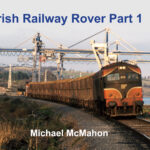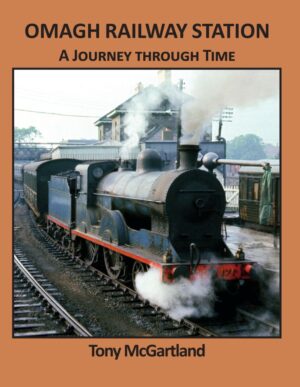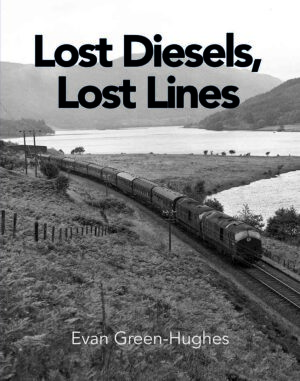
Irish Railway Rover 1
Price range: £16.50 through £17.50
by Michael McMahon
- Description
- Additional information
- Reviews (2)
Description
This is a book of superb colour photographs. A small selection from the camera of one man who had what was possibly unique access to the Irish railway network starting in 1975. This period is now looked upon as the ‘museum years’ of post-steam Irish Railways. A time of momentous change that saw the traditional infrastructure of mechanical signalling, travelling post offices, steam heating, goods train services, and 19th Century station buildings, etc progressively give way to the utilitarian, electronic era. Train formations and their operation also changed beyond recognition as the traditional locomotive and carriage formation gave way to anonymous multiple unit operation. The rare privilege of all-Ireland footplate passes led to an estimated 80,000 miles of footplate travel between 1982 and 1995. In this book author Michael McMahon shares around ninety pictures from his immense collection to provide a fitting tribute to both the railwaymen and the railway of a bygone age.
Preview Pages
Additional information
| Weight | 540 g |
|---|---|
| Dimensions | 24 × 18.5 cm |
| Pages | 80 |
| Cover Choice | Hardback, ebook |
| Illustrations | 85 |
| Format | Landscape |











robert morrey –
A wonderful, nostalgic wander round Ireland’s railways, in the halcyon days of proper trains ( loco + coaches/wagons) and proper, atmospheric locations where stations have sidings and yards controlled by manual signal boxes and semaphore signals. Sheer magic.
Bring on volume 2.
Joe Cassells –
This is a book about what the author describes as the ‘museum years’ of post-steam Irish Railways. Steam finished on the Irish railway network in the early 1960s, but until the mid 1990s the atmosphere of the steam age remained. There was a good variety of locomotives, and passenger rolling stock – much of it steam heated! Regular flows of goods traffic included sugar beet, cement and fertiliser as well as a variety of mineral traffic. Day and night mail trains were still a feature of the system. The railway was still largely semaphore signalled, and many of the stations retained traditional infrastructure and substantial goods yards.
For some forty years Michael McMahon spent much of his spare time recording in detail the last days of an age which was gradually passing. His involvement in organising enthusiast tours gave him useful contacts with railway professionals, and led to footplate passes and privileged access to railway operation from the inside. Best of all, his camera went with him as he travelled the system.
“Irish Railway Rover Part 1” is an outstanding collection of high quality colour images of this era, focussing on both day to day operation and the unusual and unexpected in operation. There is an informative introduction, and the detailed captions in themselves provide both a rare insight into railway operation in Ireland, North and South, and a poignant recreation of the atmosphere of a busy and still varied system. The result is an indispensable guide to what in retrospect was a golden age. Without hesitation, a five star rating!
Michael is already working on “Irish Railway Rover Part 2”. Those of us who have read Part 1 will be awaiting the sequel with great anticipation.